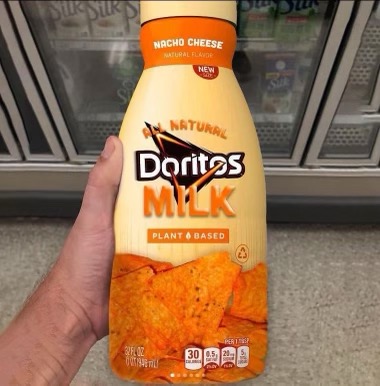

Yeah, no lubricants and the look / style factor - that was my conclusion as well.
As for maintenance, while a belt might last 3 times as long, that’s not really a factor, given the price difference between belts and chains.


Yeah, no lubricants and the look / style factor - that was my conclusion as well.
As for maintenance, while a belt might last 3 times as long, that’s not really a factor, given the price difference between belts and chains.


Exactly, which is why I was trying to think of any actual reasons I might want a belt, except style.


Are there any other reasons I’d want this apart from the lack of oil and the decreased noise levels, the coolness factor and the tinkering itself?
Every single one is a valid reason in itself of course, but maybe there is more.
I’ll post some links, but it’s a pretty busy week for me already, so give me some time.
An interrupt is an input that can be triggered to interrupt normal execution. It is used for e. g. hardware devices to signal the processor something has happened that requires timely processing, so that real-time behavior can be achieved (for variable definitions of real-time). Interrupts can also be triggered by software, and this explanation is a gross oversimplification, but that information is what is most likely relevant and interesting for your case at this point.
The commands you posted will sort the interrupts and output the one with the highest count (via head -1), thereby determining the interrupt that gets triggered the most. It will then disable that interrupt via the user-space interface to the ACPI interrupts.
One of the goals of ACPI is to provide a kind of general hardware abstraction without knowing the particular details about each and every hardware device. This is facilitated by offering (among other things), general purpose events - GPEs. One of these GPEs is being triggered a lot, and the processing of that interrupt is what causes your CPU spikes.
The changes you made will not persist after a reboot.
Since this is handled by kworker, you could try and investigate further via the workqueue tools: https://github.com/torvalds/linux/tree/master/tools/workqueue
In general, Linux will detect if excessive GPEs are generated (look for the term “GPE storm” in your kernel log) and stop handling the interrupts by switching to polling. If that happens, or if the interrupts are manually disabled, the system might not react to certain events in a timely manner. What that means for each particular case depends on what the interrupts are being responsible for - hard to tell without additional details.


It’s not like Bluetooth started demanding location permissions, the conceptual model of the permission was revised: having access Bluetooth means an app could determine your location via a form of lateration.
In earlier versions of smartphone operating systems, this was not transparent to users lacking the technical background, so Bluetooth also requiring location access is actually an attempt at making users aware of that. I’m not an iOS developer, so I can’t comment on iPhones, but on Android versions prior to 11, having access to Bluetooth meant an app would be able to determine your location.
Today, you can require the permission ACCESS_FINE_LOCATION, which expresses that your app might use Bluetooth to obtain location information on Android. Also, if you’re just scanning for nearby devices to connect your app to, but don’t want users to be confused why your smart fridge app needs to know your precise location, you can declare a permission flag (neverForLocation) and Android will strip beacon information from the scan results, better asserting your intentions.
So, overall: no, there is nothing nefarious going on, it was always possible to determine your location via Bluetooth, and the update to the permission model was an honest improvement that actually benefits you as user.
Now, there are still plenty of shady apps around, and apps that are poorly written - don’t use those.


Right? Cover a fucking donut with mayonnaise, serve it on a single leaf of lettuce - boom, salad.
honey bees are bad for pollinators
Hm? What do you mean?
From this paper:
A. mellifera appears to be the most important, single species of pollinator across the natural systems studied, owing to its wide distribution, generalist foraging behaviour and competence as a pollinator.
This is a genuine question btw.
I shudder to think OP’s post was written by an actual person…


What’s a good way to financially support artists directly, without involving shady corporations, and without resorting to piracy?
Jokes on you, I look her up once a year to see what she ended up doing. I’m 100% her name is Danielle.


But it’s not just information, someone sat in front of their computer and put the work in to design it, then print it and iterate.
You’re paying for that process, and for the time and effort the person took to acquire the necessary skills.
However, there should be a noticeable price difference due to the easy scaling / replicatibility when distributing digital goods.
I’m with you insofar as the final product feels like it should be 3 bucks, not the file.


This, however, is about diagnostics, i. e. annotating delete with a reason (message) to express developer intent when deleting a function, not about memory management.


Oh, I did grow up before video games were a thing, so I am aware of how CRTs worked. You just made it sound like CRTs would somehow provide tactile feedback while gaming, which I couldn’t place at all, given the context.


Sorry, tactile response from a CRT?
You share a room with the maid?


If I look at something that I don’t understand but that a large group of people clearly values very highly, trained experts in the field included, my first instinct is not to form a dismissive opinion based on personal preference. I’ll typically try to find whatever is hidden from me upon first glance. You clearly adopted a different strategy.
How did you arrive at the conclusion that your judgement of art is ultimately meaning-, or even insightful?
I wrote some allocators for IBM’s JVM eons ago, I get that. As much as I hate Java, I wish it would be related this time.
Unfortunately, I was talking about the Joe Rogan Experience.
What are your requirements? I liked CalenGoo, I can live with aCalendar and BusinessCalendar.